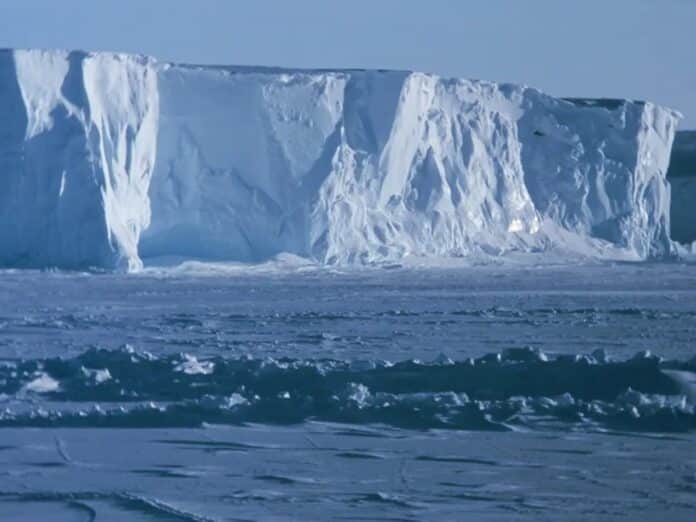In Antarctica, ice streams—which act as conveyor belts of ice—move heavy glaciers and sediment debris toward the ocean.
Researchers from Washington University in St. Louis have discovered that the Ross Ice Shelf, the largest ice shelf in Antarctica, is nudged out of place by an ice stream called the Whillans Ice Stream at least once daily.
The Ross Ice Shelf is about the same size as France’s country. It floats on the ocean’s surface, extending from the land into the sea. The ice shelf suddenly moves about 6 to 8 centimeters (or 3 inches) once or twice a day. It is triggered by a slip on an ice stream that flows into the ice shelf.
The dynamics and stability of continental ice sheets and shelves depend heavily on the interactions between ice streams and ice shelves. This information also tells about the stability of Antarctica’s ice shelves in a warming world. These sudden movements could potentially trigger icequakes and fractures in the ice shelf.
Ice shelves can build up more ice on the continent by acting as brakes for glaciers and ice streams, slowing their flow to the sea, where they melt. If an ice shelf collapses, this support disappears, and the glaciers are free to flow more quickly. After they enter the ocean, they contribute to sea level rise.
Scientists in this study focus on movement triggered by the Whillans Ice Stream, one of about a half-dozen large, fast-moving rivers of ice pouring into the Ross Ice Shelf.
Wiens said, “The movement occurs over several minutes, so it is not perceptible without instrumentation. That’s why the movement has not been detected until now, even though people have been walking and camping on the Ross Ice Shelf since the time of the great explorers Robert F. Scott and Roald Amundsen.”
Similar to how an earthquake occurs along a fault line, the movement of the Ross Ice Shelf is caused by an abrupt occurrence known as a slip. A significant portion of the Whillans Ice Stream remains stationary throughout this slip event while the remaining portion advances. It can travel up to 40 cm (16 inches) in a matter of minutes.
For a long time, scientists have been observing the changes in ice streams. Seismographs are used to detect these abrupt movements, which aids in their understanding of their source.
“I’ve published several papers about the Whillans Ice Stream slip events in the past but had not discovered that the whole Ross Ice Shelf also moves until now,” Wiens said.
Scientists disagree that climate change caused by human activity is to blame for these slide episodes. Rather, they speculate that it could be because the Whillans Ice Stream’s bed is becoming stickier due to water loss. The strain and stress experienced during these slide occurrences are comparable to those that, in some situations, result in earthquakes.
“At this point, icequakes and fractures are just part of the normal life of the ice shelf,” Wiens said. “There is a worry that the Ross Ice Shelf will someday disintegrate since other smaller and thinner ice shelves have done so. We also know that the Ross Ice Shelf disintegrated during the last interglacial period — about 120,000 years ago — and that caused rapid ice loss to the other glaciers and ice streams feeding into it.”
Journal Reference:
- Douglas A. Wiens, Richard C. Aster, Andrew A. Nyblade, Peter D. Bromirski, Peter Gerstoft, Ralph A. Stephen. Ross Ice Shelf Displacement and Elastic Plate Waves Induced by Whillans Ice Stream Slip Events. Geophysical Research Letters. DOI: 10.1029/2023GL108040
